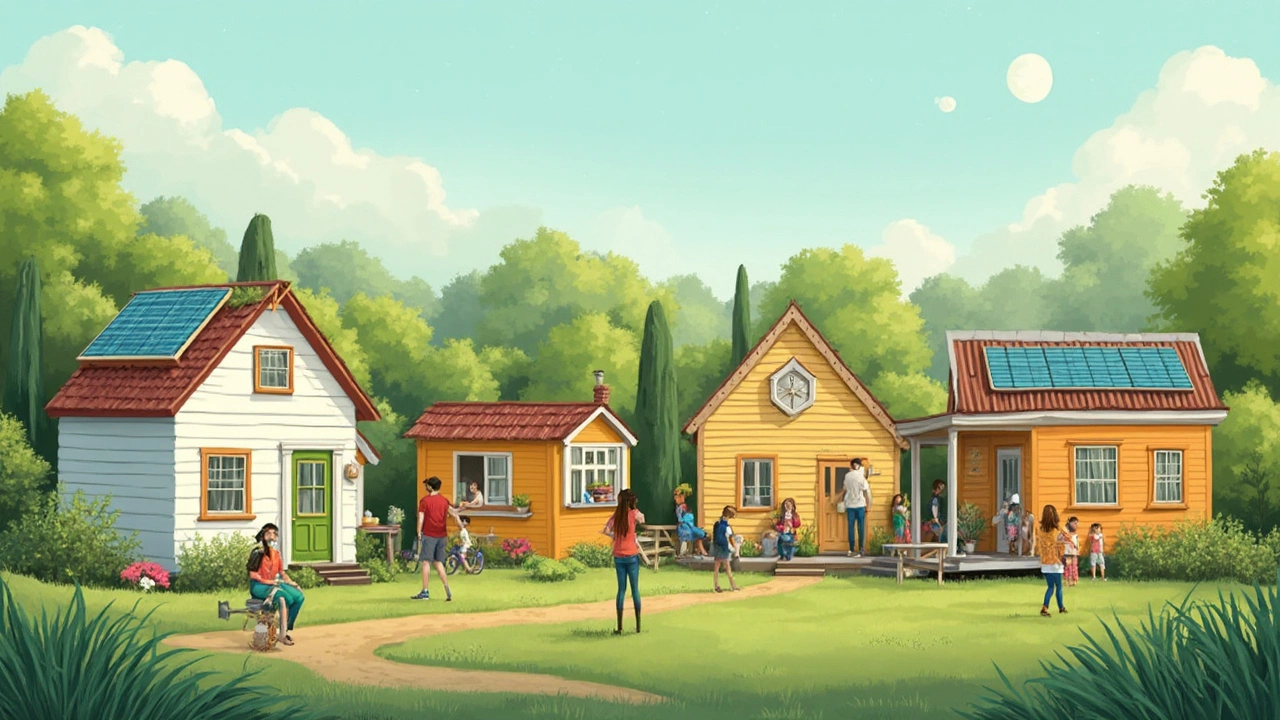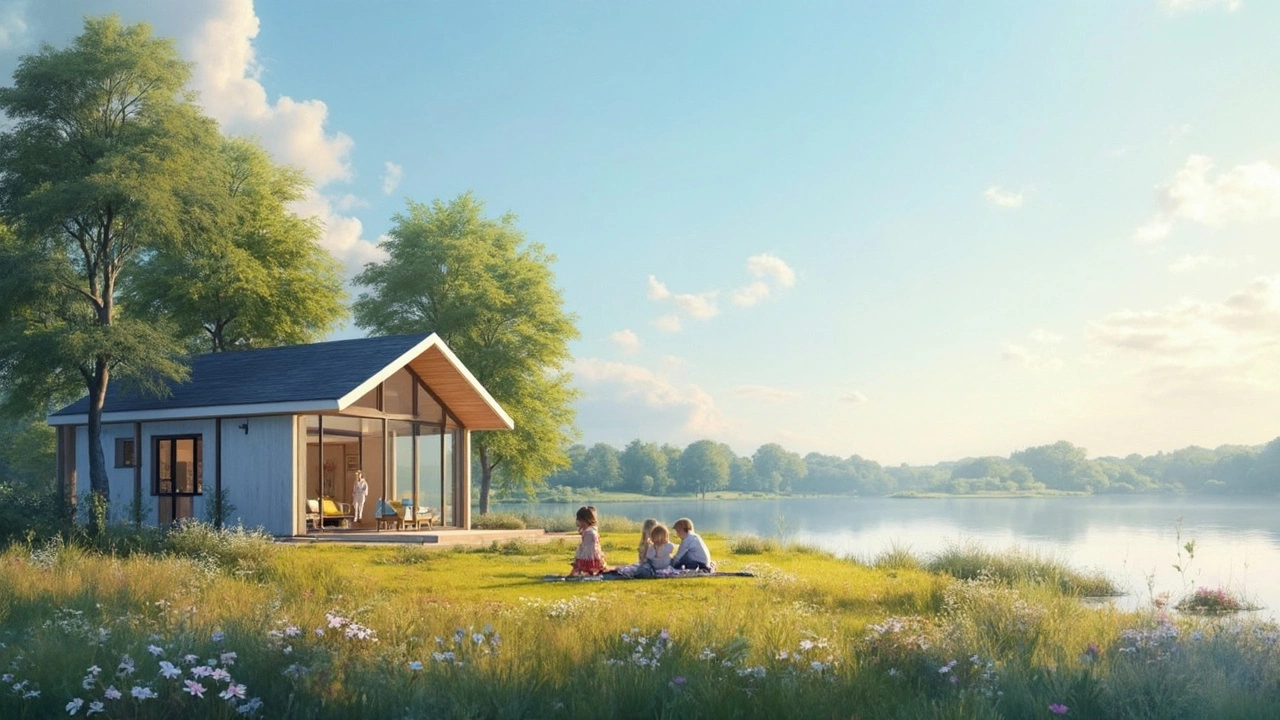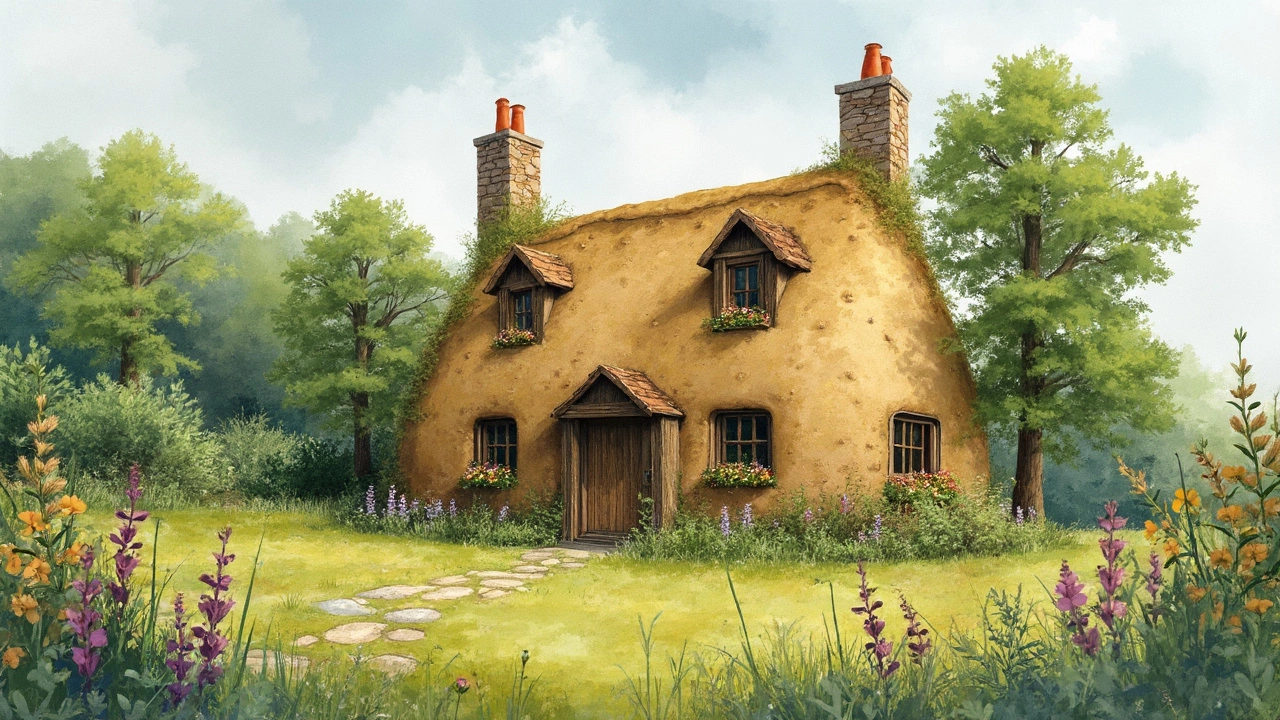Thinking about building a home that's kind to both the environment and your bank account? You might want to consider an eco-friendly cottage. These little wonders aren't just cute; they embrace sustainable materials and smart designs that can save you some serious cash.
Now, you might be wondering what makes these homes so special. For starters, materials like cob, straw bales, or even recycled pallets offer a budget-friendly alternative to traditional building supplies. They also help keep energy costs down, which is a win-win for you and the Earth.
But it's not just about materials. Simpler building techniques like using prefabricated panels or going tiny with your home can drastically cut costs. Imagine not having to deal with the fuss of a hefty construction process!
So whether you're dreaming of a charming tiny home or a spacious prefab retreat, there's an eco-friendly option to fit your budget and help you live sustainably. Keep reading to explore how you can make this dream a reality without going broke.
- Understanding Eco-Friendly Cottages
- Cost-Saving Materials for Construction
- Simple Building Techniques to Cut Costs
- Comparing Different Cottage Types
- Tips for Reducing Your Environmental Impact
Understanding Eco-Friendly Cottages
Eco-friendly cottages are more than just a buzzword; they're a practical choice for anyone looking to reduce their environmental footprint while keeping construction costs low. These homes focus on using sustainable and often locally-sourced materials, minimizing waste and energy consumption. Whether you're building a new home or looking to downsize, these cottages offer a smart, modern approach to living.
One of the coolest things about these cottages is the variety of building materials you can use. Cob, for example, is a natural material made from a mix of sand, clay, straw, and water. It's great for insulation and helps keep your home cool in the summer and warm in the winter. What's more, cob is budget-friendly and gives your cottage a unique, rustic look.
Not into cob? No worries. Straw bale construction is another option that's incredibly efficient. These tightly packed bales of straw make excellent insulators and can reduce your heating and cooling costs significantly. Plus, straw is renewable and typically easy to source locally.
Thinking about going tiny? Tiny homes are a big part of the eco-friendly movement. Their smaller size means less material is needed for construction and less energy is required to maintain them. Plus, with their growing popularity, there's a plethora of designs and plans available to suit any taste.
For those looking into prefab options, these homes are built off-site and assembled on your land, which can save time and money. Prefab homes are designed for efficiency and can incorporate sustainable materials like bamboo or recycled steel.
Regardless of the type you choose, these eco-friendly cottages offer a way to live comfortably without harming the planet—or your wallet. So if you're determined to make a positive impact, building one of these cottages might just be the way to go.
Cost-Saving Materials for Construction
When you're trying to stick to a budget while building your dream eco-friendly cottage, the first thing you want to think about is your choice of materials. These materials can drastically lower your costs without sacrificing quality or sustainability, and that's a major win.
One of the coolest materials to consider is cob. Cob is a natural building material made from subsoil, water, fibrous organic material (like straw), and sometimes lime. Not only is this stuff dirt cheap (quite literally), but it's also great for insulation.
If you're into something a bit more formal, look at straw bale construction. These versatile bales can form the walls of your cottage, offering excellent insulation qualities. And guess what? Straw bales are affordable and widely available, making them a fantastic option for those watching their spending.
For those eyeing a more modern twist, recycled materials can come in handy. Things like reclaimed wood or even recycled steel are perfect for constructing a durable home while keeping waste down. These materials, often sourced from other deconstructed buildings, are affordable and reduce your environmental footprint.
Here's a nifty table to quickly compare the costs and benefits of these options:
| Material | Cost | Benefits |
|---|---|---|
| Cob | Low | Natural insulation, low cost, eco-friendly |
| Straw Bale | Moderate | Great insulation, renewable, affordable |
| Recycled Materials | Variable | Eco-friendly, budget-friendly, durable |
Don't forget about local resources, too. Buying locally sourced materials not only cuts transportation costs but also supports local economies. Plus, local options often have better availability, saving you time and effort.
By choosing smart materials, you'll be well on your way to building an affordable home that's as easy on the planet as it is on your wallet.

Simple Building Techniques to Cut Costs
Want to keep your eco-friendly cottage project from blowing up your budget? Using some straightforward building techniques can make a world of difference and keep your dream within reach.
First off, think about going small. Tiny homes are all the rage for a reason—they're compact, cozy, and don't cost a fortune. With less space to build and heat, you save a ton on materials and energy bills. Plus, they're perfect for those who want to minimize their impact on the environment.
If tiny isn’t your style, consider prefabricated panels. These panels are built in a factory and simply put together on-site. It’s kind of like a big, grown-up version of Lego. You snap everything in place quickly, which saves not just on labor costs but also significantly cuts down on construction time.
Another game-changer is opting for a straightforward design. The fewer the frills, the lower the cost. A simple floor plan with fewer walls and open spaces not only looks modern but keeps expenses down. Complexity in the design often translates to increased labor and materials costs.
Check out these quick tips to further streamline your building process:
- Use local materials to cut shipping costs and reduce your carbon footprint.
- Stick with a standard roof shape—a gable or flat roof is easier and cheaper to construct.
- Consider doing some of the simpler tasks yourself, like painting or landscaping!
These techniques might seem basic, but they’re effective at trimming off those extra expenses while staying true to your eco-friendly ethos. So whether you're into tiny homes or just a simple cottage vibe, these strategies have got you covered.
Comparing Different Cottage Types
When it comes to building an affordable home, especially one that's eco-friendly, there are quite a few cottage types out there that can tick both boxes. But which one should you pick? Let's break down some of the popular choices and see how they stack up.
First up, we've got tiny homes. These are great if you're aiming for simplicity and cutting down on both construction costs and living expenses. They usually range between 100-400 square feet, making them ideal if you're cool with downsizing. The small size means less material and energy use. Plus, if you put yours on wheels, you can change your scenery anytime!
Next, there's the cob home. Built from a mix of clay, sand, straw, and water, cob homes are dirt cheap—literally! They offer fantastic insulation, which keeps energy bills low, and they have this charming, earthy vibe. Cob homes take a bit more DIY effort, but the savings on materials make it worth it.
Then we have prefabricated cottages. These are produced off-site and put together on your land in no time. Prefabs are super efficient and tend to waste less material during construction. If you're looking for a mix of speed and savings, these might be your jam.
Another option gaining ground is the straw bale cottage. It's a bit more weather-resistant than cob and still provides top-notch insulation. Straw bales are usually sourced locally, so they keep your carbon footprint and costs down. They're great for those craving a more traditional look without the big bills.
- Tiny Homes: Budget-friendly, easy to maintain, and great for those with a minimalistic lifestyle.
- Cob Homes: Environmentally friendly, strong insulators, but more labor-intensive.
- Prefabricated Cottages: Quick to assemble, cost-effective, and less material waste.
- Straw Bale Cottages: Excellent insulation, durable, and sustainable.
Choosing the right type depends on your budget, building skills, and lifestyle. Whether it's the coziness of a tiny home or the rustic charm of a cob cottage, there's an eco-friendly option out there that's both affordable and suits your taste.

Tips for Reducing Your Environmental Impact
Going green with your home isn't just a trend; it's a smart and responsible way to build. Here's how you can make your eco-friendly cottage as gentle on the planet as possible without spending a ton of cash.
First off, think local. Using locally sourced materials cuts down on transportation emissions and often supports your community. So, if there's a local supplier for things like reclaimed wood or recycled glass, go for it!
An excellent way to make your home both affordable and green is to focus on energy efficiency. This can be as simple as installing LED lighting or bigger projects like solar panels, which sometimes come with tax incentives. Want to up your game even more? Consider energy-efficient windows and proper insulation. These steps will keep your home comfy year-round and lower your utility bills.
Water conservation is another biggie. Installing low-flow faucets and dual-flush toilets can save significant amounts of water. If you're feeling ambitious, setting up a rainwater harvesting system can be a fantastic way to use nature's free resource.
When it comes to landscaping, native plants are your best buddies. They require less water and maintenance, which means you're not only saving money but also keeping your garden eco-friendly. Plus, they naturally attract local wildlife, which is a fun bonus!
Furniture and decorations can also be more sustainable. Look for pieces made from reclaimed or recycled materials. Thrift shopping or upcycling old furniture can give your cottage a stylish and unique flair without breaking the bank.
- Use LED lighting and energy-efficient appliances
- Install water-saving fixtures like low-flow faucets
- Choose native plants for landscaping
- Furnish with recycled or upcycled materials
By incorporating these tips, you’re doing your part in protecting the planet while enjoying the perks of an affordable, eco-friendly dream home. It’s all about small steps adding up to a big difference!
